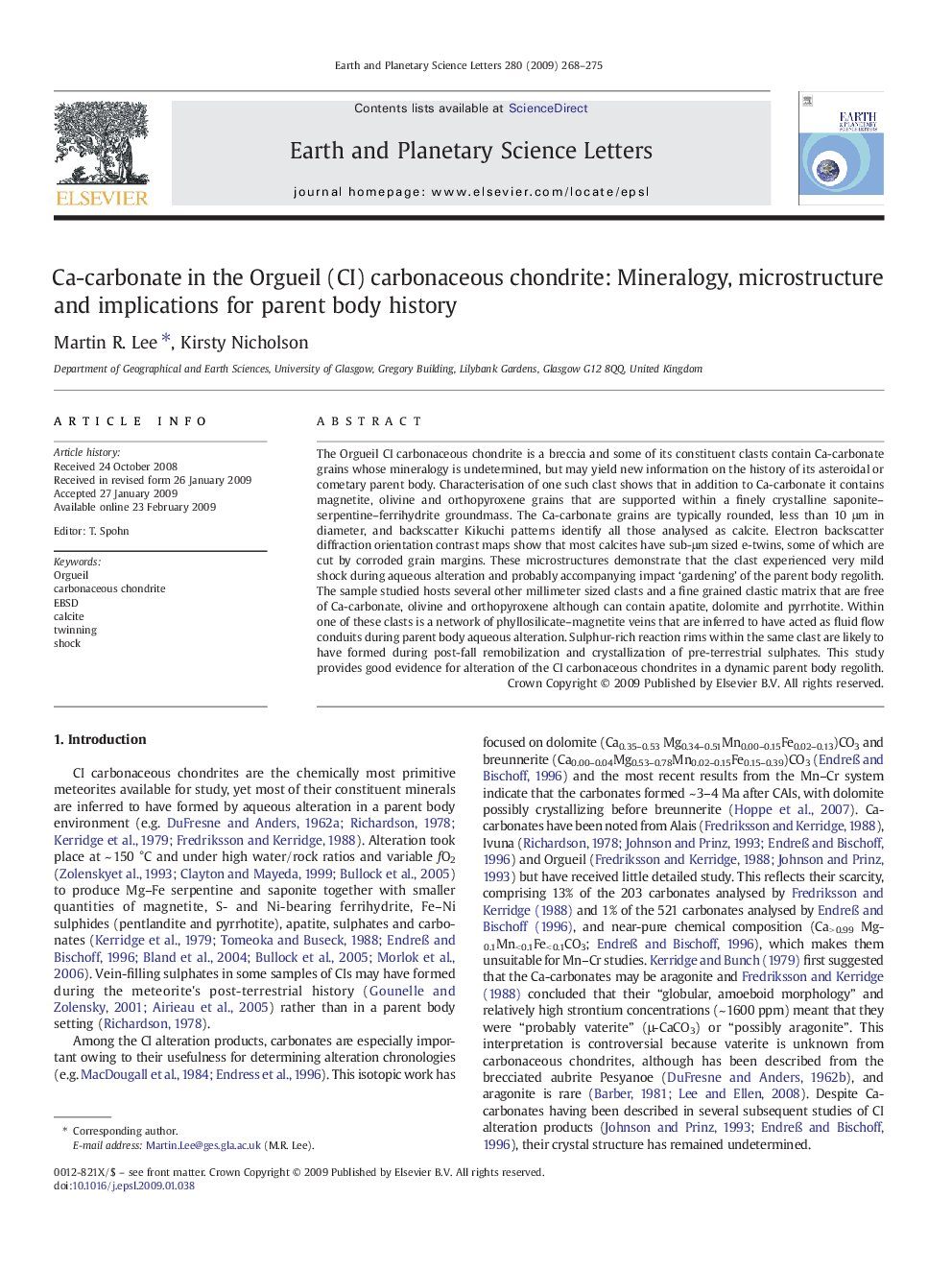| Article ID | Journal | Published Year | Pages | File Type |
|---|---|---|---|---|
| 4678920 | Earth and Planetary Science Letters | 2009 | 8 Pages |
Abstract
The Orgueil CI carbonaceous chondrite is a breccia and some of its constituent clasts contain Ca-carbonate grains whose mineralogy is undetermined, but may yield new information on the history of its asteroidal or cometary parent body. Characterisation of one such clast shows that in addition to Ca-carbonate it contains magnetite, olivine and orthopyroxene grains that are supported within a finely crystalline saponite-serpentine-ferrihydrite groundmass. The Ca-carbonate grains are typically rounded, less than 10 μm in diameter, and backscatter Kikuchi patterns identify all those analysed as calcite. Electron backscatter diffraction orientation contrast maps show that most calcites have sub-μm sized e-twins, some of which are cut by corroded grain margins. These microstructures demonstrate that the clast experienced very mild shock during aqueous alteration and probably accompanying impact 'gardening' of the parent body regolith. The sample studied hosts several other millimeter sized clasts and a fine grained clastic matrix that are free of Ca-carbonate, olivine and orthopyroxene although can contain apatite, dolomite and pyrrhotite. Within one of these clasts is a network of phyllosilicate-magnetite veins that are inferred to have acted as fluid flow conduits during parent body aqueous alteration. Sulphur-rich reaction rims within the same clast are likely to have formed during post-fall remobilization and crystallization of pre-terrestrial sulphates. This study provides good evidence for alteration of the CI carbonaceous chondrites in a dynamic parent body regolith.
Related Topics
Physical Sciences and Engineering
Earth and Planetary Sciences
Earth and Planetary Sciences (General)
Authors
Martin R. Lee, Kirsty Nicholson,
